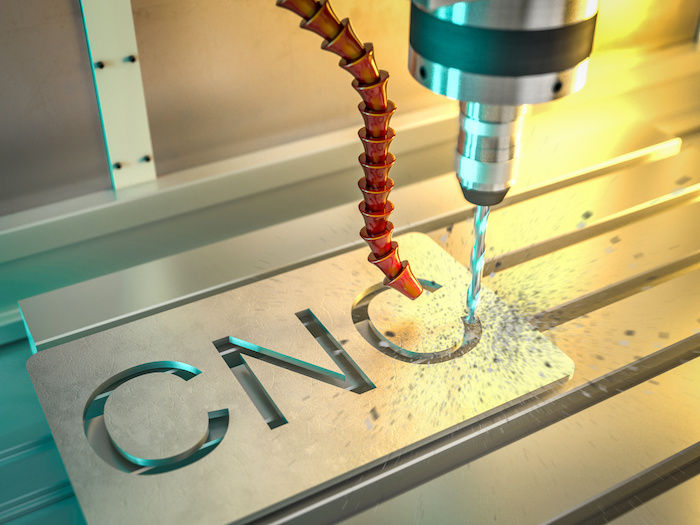Optimising Quality and Efficiency in Low-Volume CNC Machining
- LP Meccanica
- Dec 12, 2024
- 4 min read

Computer numerical control, or CNC machining, is a crucial component of manufacturing that guarantees the precise production of challenging and complex parts. However, several difficulties exist in making low-volume production runs cost-effective and efficient. This guide offers helpful details and design recommendations for enhancing the low-volume CNC machining process. Our goal is to guide you through the difficulties of low volume CNC machining by providing suggestions on improving production efficiency and reducing expenses while maintaining high standards of quality, which will increase output.
Understanding the Basic Concepts of Low-Volume CNC Machining
Low-volume CNC machining refers to producing parts using CNC machinery in small quantities, often ranging from a few hundred to a few thousand pieces. It is beneficial for short manufacturing runs, product development, and prototyping. Low-volume CNC machining and any other technique that uses numerical control systems can help manufacturers achieve high precision and reliability. Additionally, this technology allows for design modifications while offering faster turnaround times than traditional production procedures, which makes it ideal for projects that require regular customisation or faster modification.
Optimising Tips for Your Low-Volume CNC Machining
Here are some of the essential optimisation tips for your Low-Volume CNC Machining to improve quality and efficiency:
Make Geometry Simpler: Create components with simpler geometry to reduce machining complexity and time. Complex details should be avoided unless necessary, as they significantly increase the cost and complexity of manufacture.
Enhancement of CAD Models: Verify that your CAD models are error-free and optimised to remove unnecessary characteristics, checking that all dimensions and tolerances can be met within the scope of CNC.
Selection of Materials: Select materials with minimal tool wear that can be machined. POM, ABS plastics, brass, and aluminium are frequently utilised in low-volume CNC machining.
Make Use of Standard Tools: Parts should be designed to be manufactured using standard production tools and cutters. For small runs, custom tools may require incurring expensive and time-consuming costs.
Add Sufficient Tolerances: Specify the tolerances that can be achieved using typical CNC procedures. While adequately setting quality requirements accelerates production, excessively tight tolerance requirements result in more machine hours and higher costs.
Reduce Setup Modifications: Parts must be designed so that the machine setup changes as little as possible between operations. Reducing machine downtime through single setups or fewer setup modifications increases production efficiency.
Make a Post-Processing Plan: During the design stage, some installation or finishing postprocessing should be considered. Designs created in such a way will help keep the postproduction process relatively free of unnecessary costs.
Successful Prototyping: Rapid prototyping is a valuable tool for initial design validation because it enables us to identify issues before a final manufacturing run.
With the tips mentioned above, manufacturers can optimise their low-volume CNC machining process, which leads to higher accuracy, reduced lead times, and lower price per unit manufactured.
Benefits of Using Low-Volume CNC Machining
Low-volume CNC machining is highly favoured in the manufacturing process, considering all the clear benefits that this process offers. Such advantages include high precision and very low tolerance capabilities that can be used to manufacture highly intricate and delicate components with great accuracy. This degree of accuracy is essential for sectors like aerospace and medicine, where slight errors can cause serious problems.
In return, low-volume CNC machining affords greater flexibility in the choice of material. Metal, polymers, composites, and various materials are available for manufacturer selection for any desired performance criteria. The process can also make complex or less complex geometries, which traditional methods cannot always use.
The second set of benefits includes savings in tooling costs and reduced setup times. CNC machining does not require a costly and time-consuming mould or die fabrication, which is required in traditional manufacturing methods. Instead, it uses digital files to make the transition from design to production very rapid. This makes the method extremely versatile and cuts lead times. Prototyping can be swiftly followed by small-batch manufacturing without requiring a lot of restructuring.
Low-volume CNC machining allows only just-in-time manufacturing processes that minimise waste and inventory costs. Since companies only manufacture the required components, they do not encounter the overproduction of unsold inventory and react quickly to market changes.
In the final analysis, the following technological factors support the benefits of low-volume CNC machining:
Accuracy and Tolerance: It can reach tolerances as close as ±0.001 inches.
Material Flexibility: Compatibility with various materials, including PEEK, ABS, titanium, stainless steel, and aluminium.
Quick Turnaround: In digital design files, efficiency in transforming CAD models into finalised products leads to a tremendous reduction in lead times.
Affordability: Compared to the old ways of doing things, its low setup and tooling cost allow for prototyping and low-volume production.
The Bottom Line
Success in low-volume CNC machining can be achieved by two simple words: quality and efficiency. However, these are pretty hard to achieve. So, the above-mentioned are some tips that will increase your machining production.
The in-depth knowledge of CNC machining procedures that only experience and a dedication to remaining on the cutting edge of innovation can provide us at LP Meccanica. We optimise our processes and offer superior-quality custom CNC parts with quick turnaround times by employing efficient CNC machining techniques like those described above.


Comments